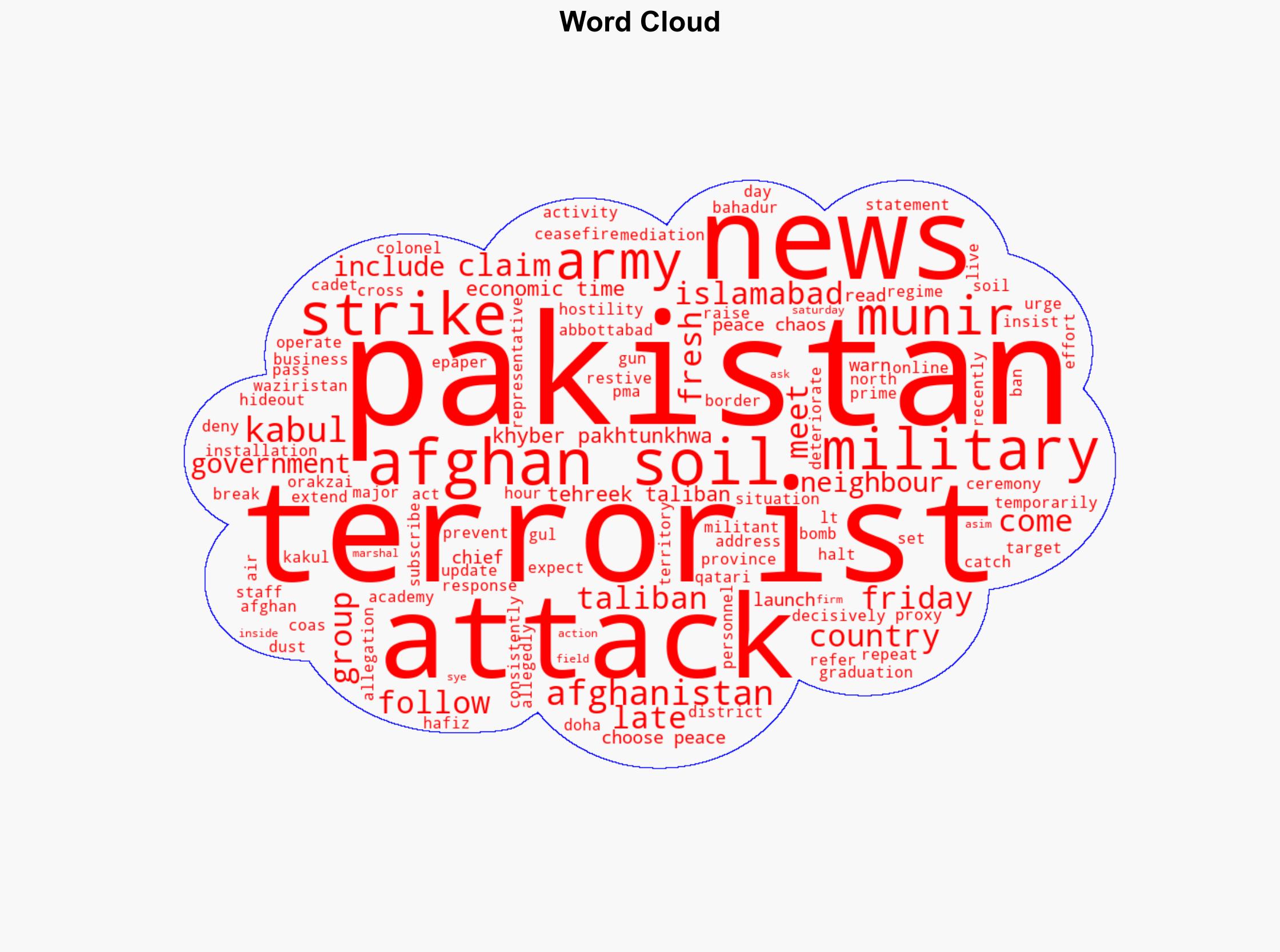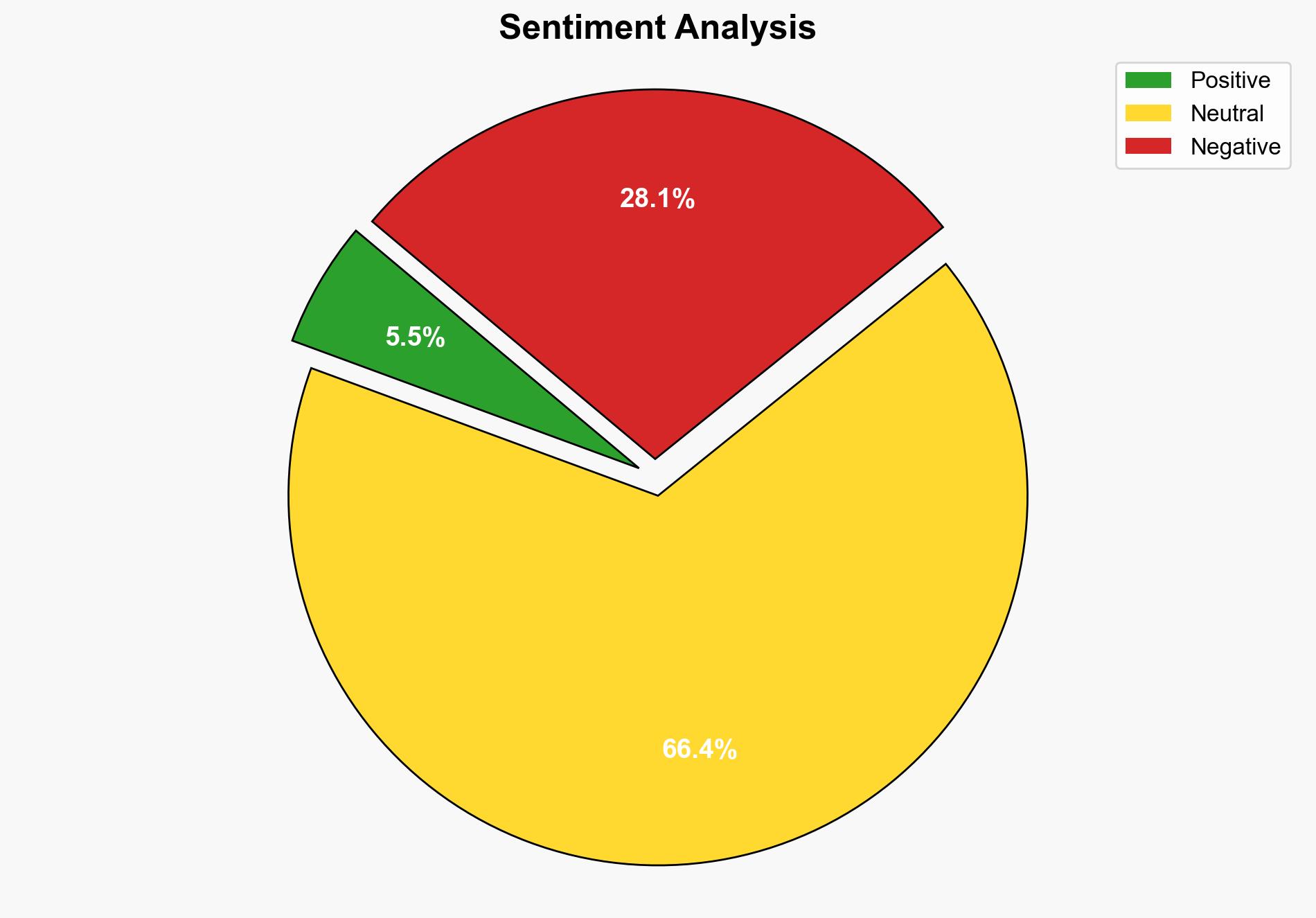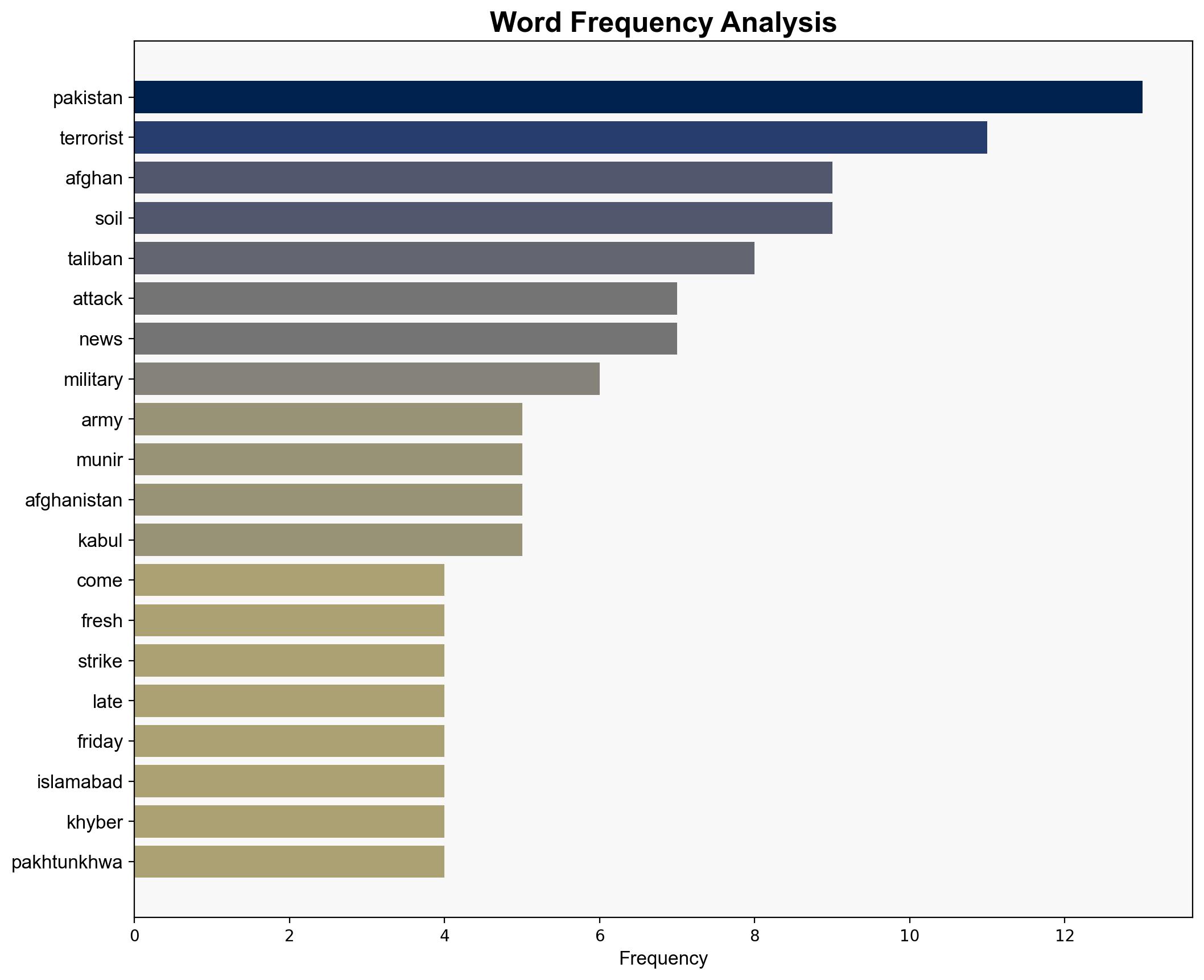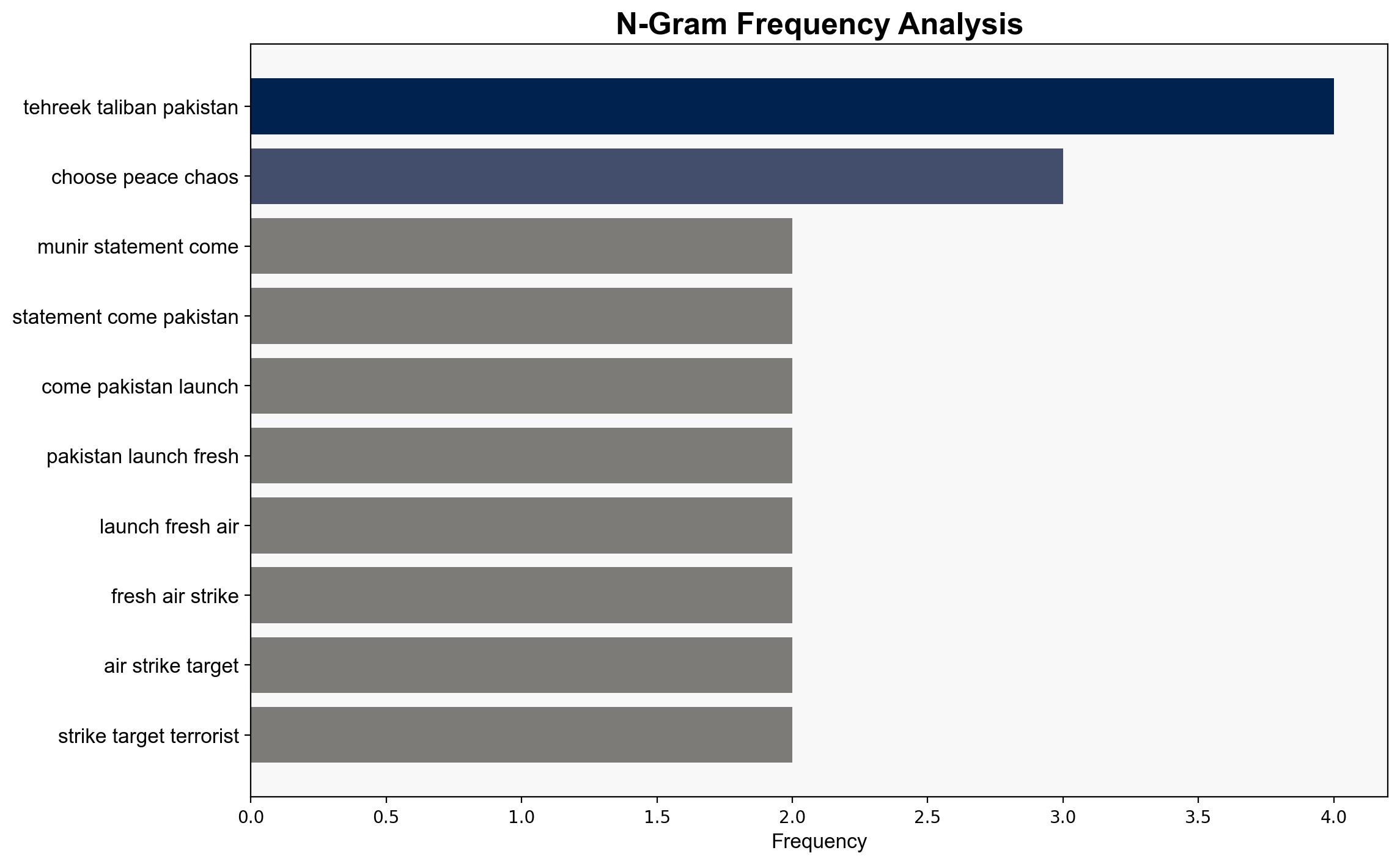Choose between ‘peace and chaos’ Pakistan Army chief Asim Munir warns Taliban amid escalating hostilities – The Times of India
Published on: 2025-10-18
Intelligence Report: Choose between ‘peace and chaos’ Pakistan Army chief Asim Munir warns Taliban amid escalating hostilities – The Times of India
1. BLUF (Bottom Line Up Front)
The strategic judgment indicates a medium confidence level in the hypothesis that Pakistan’s military actions and diplomatic pressure will lead to a temporary reduction in cross-border terrorist activities. However, the underlying tensions and lack of trust between Pakistan and the Taliban regime may hinder long-term stability. It is recommended to enhance diplomatic engagement and intelligence-sharing mechanisms to mitigate risks.
2. Competing Hypotheses
Hypothesis 1: Pakistan’s military strikes and diplomatic warnings will compel the Taliban to take decisive action against terrorist groups operating from Afghan soil, leading to a reduction in cross-border attacks.
Hypothesis 2: The Taliban will continue to deny involvement and fail to take effective measures against terrorist groups, resulting in ongoing hostilities and potential escalation of conflict.
Using ACH 2.0, Hypothesis 1 is moderately supported due to recent diplomatic efforts and international mediation attempts, while Hypothesis 2 remains plausible given historical patterns of denial and inaction by the Taliban.
3. Key Assumptions and Red Flags
Assumptions include the belief that the Taliban has sufficient control over terrorist groups and that international mediation can influence Taliban actions. A red flag is the Taliban’s consistent denial of allegations, which may indicate either deception or a lack of control over these groups. The absence of concrete evidence linking specific attacks to Afghan soil is a blind spot.
4. Implications and Strategic Risks
The ongoing hostilities risk destabilizing the region further, potentially leading to increased refugee flows and economic disruption. There is a risk of retaliatory attacks by terrorist groups, escalating into a broader conflict. The geopolitical dimension includes strained relations with neighboring countries and potential involvement of international actors.
5. Recommendations and Outlook
- Enhance intelligence-sharing with Afghanistan and international partners to verify terrorist group activities.
- Increase diplomatic efforts to engage the Taliban in dialogue, leveraging international mediators.
- Scenario Projections:
- Best Case: Taliban takes decisive action, leading to a significant reduction in cross-border attacks.
- Worst Case: Escalation of hostilities leads to a broader regional conflict.
- Most Likely: Continued sporadic attacks with intermittent diplomatic engagements.
6. Key Individuals and Entities
Asim Munir, Hafiz Gul Bahadur, Tehreek-e-Taliban Pakistan
7. Thematic Tags
national security threats, counter-terrorism, regional focus





